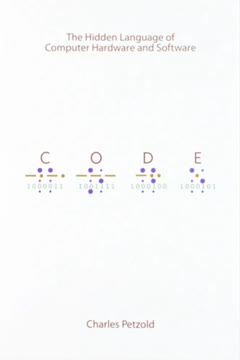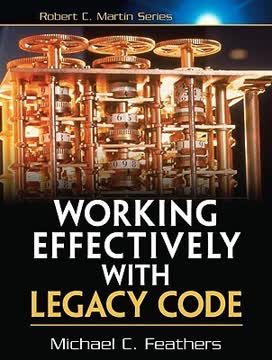मुख्य निष्कर्ष
1. नियमित अभिव्यक्तियाँ: पाठ प्रसंस्करण और पैटर्न मिलान के लिए शक्तिशाली उपकरण
नियमित अभिव्यक्तियाँ शक्तिशाली, लचीले और प्रभावी पाठ प्रसंस्करण की कुंजी हैं।
लचीला पैटर्न मिलान: नियमित अभिव्यक्तियाँ एक विशेष वर्णों के पैटर्न को "मिलाने" के लिए संक्षिप्त और लचीला साधन प्रदान करती हैं। इनका उपयोग कई प्रकार के अनुप्रयोगों में किया जाता है, जैसे:
- खोज और प्रतिस्थापन कार्यों के लिए पाठ संपादक
- फॉर्म और इनपुट फ़ील्ड में डेटा मान्यता
- संरचित पाठ से जानकारी निकालना और पार्स करना
- लॉग फ़ाइल विश्लेषण और प्रणाली प्रशासन कार्य
- प्राकृतिक भाषा प्रसंस्करण और पाठ खनन
सार्वभौमिक समर्थन: अधिकांश आधुनिक प्रोग्रामिंग भाषाएँ और पाठ प्रसंस्करण उपकरण नियमित अभिव्यक्तियों का समर्थन करते हैं, जिससे यह डेवलपर्स और डेटा विश्लेषकों के लिए एक मौलिक कौशल बन जाता है। उदाहरणों में शामिल हैं:
- पर्ल, पायथन, जावा, जावास्क्रिप्ट, और रूबी
- यूनिक्स कमांड-लाइन उपकरण जैसे grep, sed, और awk
- उन्नत स्ट्रिंग मिलान और हेरफेर के लिए डेटाबेस सिस्टम
2. नियमित अभिव्यक्ति इंजन को समझना: NFA बनाम DFA दृष्टिकोण
नियमित अभिव्यक्ति इंजनों के पीछे की दो बुनियादी तकनीकों के नाम कुछ हद तक प्रभावशाली हैं: नॉनडिटर्मिनिस्टिक फाइनाइट ऑटोमेटन (NFA) और डिटर्मिनिस्टिक फाइनाइट ऑटोमेटन (DFA)।
NFA (नॉनडिटर्मिनिस्टिक फाइनाइट ऑटोमेटन):
- नियमित अभिव्यक्ति-निर्देशित दृष्टिकोण
- अधिकांश आधुनिक भाषाओं में उपयोग किया जाता है (पर्ल, पायथन, जावा, .NET)
- बैकरेफरेंस और लुकअराउंड जैसी शक्तिशाली सुविधाओं की अनुमति देता है
- प्रदर्शन नियमित अभिव्यक्ति के निर्माण के आधार पर भिन्न हो सकता है
DFA (डिटर्मिनिस्टिक फाइनाइट ऑटोमेटन):
- पाठ-निर्देशित दृष्टिकोण
- पारंपरिक यूनिक्स उपकरणों में उपयोग किया जाता है (awk, egrep)
- सामान्यतः तेज और अधिक सुसंगत प्रदर्शन
- NFA इंजनों की तुलना में सीमित विशेषताओं का सेट
इन इंजनों के बीच के अंतर को समझना प्रभावी और कुशल नियमित अभिव्यक्तियाँ लिखने के लिए महत्वपूर्ण है, क्योंकि एक ही नियमित अभिव्यक्ति विभिन्न कार्यान्वयन के आधार पर भिन्न व्यवहार कर सकती है।
3. नियमित अभिव्यक्ति की व्याकरण में महारत: मेटा-चर, मात्रक, और एंकर
मेटा-चर के नियम इस बात पर निर्भर करते हैं कि आप वर्ण वर्ग में हैं या नहीं।
मुख्य नियमित अभिव्यक्ति घटक:
- मेटा-चर: विशेष वर्ण जिनका अद्वितीय अर्थ होता है (जैसे, . * + ? |)
- वर्ण वर्ग: मिलाने के लिए वर्णों के सेट (जैसे, [a-z], [^0-9])
- मात्रक: पूर्ववर्ती तत्वों की पुनरावृत्ति को निर्दिष्ट करते हैं (* + ? {n,m})
- एंकर: वर्णों के बजाय स्थानों को मिलाते हैं (^ $ \b)
- समूह बनाना और कैप्चर करना: तार्किक समूह बनाने और पाठ निकालने के लिए कोष्ठक
संदर्भ-संवेदनशील व्यवहार: कुछ वर्णों की व्याख्या उनके संदर्भ के आधार पर बदलती है। उदाहरण के लिए:
- एक हाइफ़न (-) एक वर्ण वर्ग के बाहर एक शाब्दिक वर्ण है, लेकिन एक वर्ग के अंदर एक सीमा को दर्शाता है
- एक कैरेट (^) एक वर्ग के बाहर "लाइन की शुरुआत" का अर्थ है, लेकिन एक वर्ग की शुरुआत में "नकारात्मकता" का
इन बारीकियों में महारत हासिल करने से विभिन्न नियमित अभिव्यक्ति प्रकारों और कार्यान्वयनों में सटीक और शक्तिशाली पैटर्न मिलान संभव हो जाता है।
4. कुशल नियमित अभिव्यक्तियाँ बनाना: सही और प्रदर्शन के बीच संतुलन
एक अच्छी नियमित अभिव्यक्ति लिखने में कई चिंताओं के बीच संतुलन बनाना शामिल है।
मुख्य विचार:
- सहीता: इच्छित पैटर्न को सटीकता से मिलाना जबकि झूठे सकारात्मक से बचना
- पठनीयता: ऐसे अभिव्यक्तियाँ बनाना जो रखरखाव योग्य और समझने योग्य हों
- दक्षता: गति और संसाधन उपयोग के लिए अनुकूलन, विशेष रूप से बड़े पैमाने पर प्रसंस्करण के लिए
संतुलन रणनीतियाँ:
- जब संभव हो, सामान्य पैटर्न के बजाय विशिष्ट पैटर्न का उपयोग करें
- विकल्पों के सावधानीपूर्वक क्रम से अनावश्यक बैकट्रैकिंग से बचें
- नियमित अभिव्यक्ति इंजन के अनुकूलन का लाभ उठाएँ (जैसे, एंकर, शाब्दिक पाठ का प्रदर्शन)
- जटिल पैटर्न को उपयुक्त होने पर कई सरल नियमित अभिव्यक्तियों में विभाजित करें
- प्रतिनिधि डेटा सेट के साथ नियमित अभिव्यक्ति के प्रदर्शन का बेंचमार्क और प्रोफाइल करें
याद रखें कि सबसे कुशल नियमित अभिव्यक्ति हमेशा सबसे पठनीय या रखरखाव योग्य नहीं होती। अपने प्रोजेक्ट और टीम की विशिष्ट आवश्यकताओं के अनुसार संतुलन बनाने का प्रयास करें।
5. अनुकूलन तकनीकें: शाब्दिक पाठ और एंकर का प्रदर्शन
शाब्दिक पाठ का प्रदर्शन
शाब्दिक पाठ का प्रदर्शन:
- नियमित अभिव्यक्ति इंजनों को तेज उपस्ट्रिंग खोजों जैसे अनुकूलन लागू करने में मदद करता है
- गैर-मिलाने वाले स्ट्रिंग्स के लिए प्रारंभिक विफलता की अनुमति देकर प्रदर्शन में सुधार करता है
तकनीकें:
- सामान्य उपसर्गों को बाहर निकालें: th(?:is|at) के बजाय this|that
- अनावश्यक कैप्चरिंग ओवरहेड से बचने के लिए गैर-कैप्चरिंग समूह (?:...) का उपयोग करें
- लंबे, अधिक विशिष्ट मिलानों को प्राथमिकता देने के लिए विकल्पों को पुनर्व्यवस्थित करें
एंकर का उपयोग करना:
- एंकर (^ $ \A \Z \b) मिलानों के लिए स्थिति संदर्भ प्रदान करते हैं
- नियमित अभिव्यक्ति इंजनों को जल्दी से गैर-मिलाने वाली स्थितियों को बाहर करने में सक्षम बनाते हैं
सर्वोत्तम प्रथाएँ:
- उन पैटर्न में ^ या \A जोड़ें जिन्हें इनपुट की शुरुआत में मिलाना चाहिए
- उन पैटर्न के लिए $ या \Z का उपयोग करें जिन्हें अंत में मिलाना चाहिए
- आंशिक शब्द मिलानों को रोकने के लिए शब्द सीमाएँ \b का उपयोग करें
शाब्दिक पाठ को प्रदर्शित करके और एंकर का लाभ उठाकर, आप नियमित अभिव्यक्ति के प्रदर्शन में महत्वपूर्ण सुधार कर सकते हैं, विशेष रूप से बड़े डेटा सेट पर लागू जटिल पैटर्न के लिए।
6. उन्नत नियमित अभिव्यक्ति अवधारणाएँ: लुकअराउंड, एटॉमिक समूह, और पॉजेसिव मात्रक
लुकअराउंड संरचनाएँ शब्द-सीमा मेटा-चर जैसे \b या एंकर ^ और $ के समान होती हैं, क्योंकि वे पाठ को नहीं मिलाती हैं, बल्कि पाठ के भीतर स्थितियों को मिलाती हैं।
लुकअराउंड:
- सकारात्मक लुकअहेड (?=...) और लुकबिहाइंड (?<=...)
- नकारात्मक लुकअहेड (?!...) और लुकबिहाइंड (?<!...)
- वर्णों को खपत किए बिना जटिल आश्वासनों की अनुमति देता है
एटॉमिक समूह (?>...):
- समूह के भीतर बैकट्रैकिंग को रोकता है
- एक बार मिल जाने पर मिलान के लिए प्रतिबद्ध होकर प्रदर्शन में सुधार करता है
पॉजेसिव मात्रक (*+ ++ ?+):
- एटॉमिक समूह के समान, लेकिन मात्रकों पर लागू होता है
- जितना संभव हो उतना मिलाता है और कभी वापस नहीं देता
ये उन्नत सुविधाएँ सटीक और कुशल नियमित अभिव्यक्तियाँ बनाने के लिए शक्तिशाली उपकरण प्रदान करती हैं:
- लुकअराउंड का उपयोग करें जटिल मिलान स्थितियों के लिए बिना मिलान सीमाओं को बदलें
- अनावश्यक बैकट्रैकिंग को रोकने के लिए एटॉमिक समूह का उपयोग करें
- जब बैकट्रैकिंग की आवश्यकता न हो (जैसे, अच्छी तरह से निर्मित डेटा को पार्स करते समय) पॉजेसिव मात्रकों का उपयोग करें
हालांकि सभी नियमित अभिव्यक्ति प्रकारों में इन अवधारणाओं का समर्थन नहीं होता, ये उपलब्ध होने पर आपके पैटर्न की अभिव्यक्ति और प्रदर्शन में नाटकीय सुधार कर सकती हैं।
7. लूप को अनरोल करना: जटिल पैटर्न को अनुकूलित करने की एक तकनीक
लूप को अनरोल करना
अनरोलिंग तकनीक:
- दोहराए जाने वाले पैटर्न जैसे (this|that|...)* को अधिक कुशल रूपों में परिवर्तित करता है
- विशेष रूप से मात्रकों के भीतर विकल्पों के साथ मिलानों को अनुकूलित करने के लिए उपयोगी
लूप को अनरोल करने के चरण:
- दोहराए जाने वाले पैटर्न और इसके घटकों की पहचान करें
- पैटर्न के भीतर "सामान्य" और "विशेष" मामलों को अलग करें
- सामान्य रूप का उपयोग करके नियमित अभिव्यक्ति को फिर से बनाएं: सामान्य+(विशेष सामान्य+)*
अनरोलिंग के लाभ:
- कई सामान्य परिदृश्यों में बैकट्रैकिंग को कम करता है
- "आपातकालीन" नियमित अभिव्यक्तियों को प्रबंधनीय में बदल सकता है
- विशेष रूप से गैर-मिलाने वाले मामलों के लिए तेज़ मिलान का परिणाम हो सकता है
उदाहरण परिवर्तन:
- मूल: "(\.|[^"\])*"
- अनरोल्ड: "[^"\](\.[^"\])*"
अनरोल्ड संस्करण कुछ इनपुट के लिए कई गुना तेज हो सकता है, विशेष रूप से जब कोई मिलान नहीं होता। यह तकनीक नियमित अभिव्यक्ति के व्यवहार और अनुकूलित किए जा रहे विशेष पैटर्न की गहरी समझ की आवश्यकता होती है, लेकिन जटिल, बार-बार उपयोग की जाने वाली अभिव्यक्तियों के लिए महत्वपूर्ण प्रदर्शन सुधार ला सकती है।
अंतिम अपडेट:
FAQ
What's Mastering Regular Expressions about?
- Comprehensive Guide: Mastering Regular Expressions by Jeffrey E.F. Friedl is a detailed exploration of regular expressions (regex), covering their syntax, mechanics, and practical applications across various programming languages.
- Regex Engines: The book discusses different regex engines, focusing on Traditional NFA and DFA engines, explaining their operation and implications on performance.
- Practical Techniques: It provides practical techniques for crafting efficient regex patterns, emphasizing the importance of understanding backtracking and optimization strategies.
Why should I read Mastering Regular Expressions?
- Deep Understanding: This book is essential for anyone looking to gain a deep understanding of regex, whether for programming, data processing, or text manipulation.
- Real-World Examples: Friedl includes numerous real-world examples and exercises that help solidify the concepts, making it easier to apply regex in practical scenarios.
- Performance Insights: The book offers insights into performance issues and optimizations, crucial for writing efficient regex patterns that can handle large datasets or complex text processing tasks.
What are the key takeaways of Mastering Regular Expressions?
- Regex Mechanics: Understanding the mechanics of regex engines, including how they process patterns and match text, is crucial for effective use.
- Efficiency Techniques: The book provides techniques for crafting efficient expressions, helping you avoid common pitfalls that can lead to performance issues.
- Tool-Specific Information: It covers specific implementations in popular programming languages like Perl, Java, and .NET, allowing you to apply your knowledge in various contexts.
What are the best quotes from Mastering Regular Expressions and what do they mean?
- "To master regular expressions is to master your data.": This quote highlights the importance of regular expressions in effectively managing and manipulating data, emphasizing their power.
- "Regular expressions are an idea—one that is implemented in various ways by various utilities.": This reflects the versatility of regular expressions and how understanding the core concept can help you adapt to different tools and languages.
- "Understanding backtracking is perhaps the most important facet of NFA efficiency.": This statement stresses the importance of grasping how backtracking works in NFA engines, as it directly affects the performance and efficiency of regex operations.
How does Mastering Regular Expressions explain the mechanics of regex engines?
- DFA vs. NFA Engines: The book explains the differences between Deterministic Finite Automaton (DFA) and Nondeterministic Finite Automaton (NFA) engines, detailing how they process regex.
- Impact on Performance: It discusses how the choice of regex engine can affect performance and matching behavior, providing insights into crafting effective expressions.
- Practical Implications: The author emphasizes the importance of understanding the underlying mechanics of regex engines to optimize regex usage in programming.
What are the different types of regex engines discussed in Mastering Regular Expressions?
- Traditional NFA: This engine type is commonly used in many programming languages and is characterized by its backtracking behavior, which can lead to inefficiencies if not carefully managed.
- DFA (Deterministic Finite Automaton): DFA engines process regex patterns in a more linear fashion, making them faster for certain types of matches, but they lack some features like backreferences.
- POSIX NFA: This variant adheres to the POSIX standard, requiring the longest match to be found, which can lead to performance issues due to extensive backtracking.
How does backtracking affect regex performance in Mastering Regular Expressions?
- Increased Workload: Backtracking can significantly increase the workload of regex engines, especially in NFA implementations, as they may need to explore multiple paths to find a match.
- Exponential Matches: Certain regex patterns can lead to exponential backtracking, where the number of possible matches grows rapidly, causing the engine to take an impractically long time to return a result.
- Optimization Strategies: The book discusses various strategies to minimize backtracking, such as using possessive quantifiers and atomic grouping, which can help improve performance.
What are some practical techniques for writing efficient regex patterns in Mastering Regular Expressions?
- Use Non-Capturing Parentheses: When capturing is not needed, using non-capturing parentheses can reduce overhead and improve performance.
- Avoid Unnecessary Backtracking: Techniques such as reordering alternatives and using anchors can help avoid unnecessary backtracking, leading to faster matches.
- Leverage Atomic Grouping: Using atomic grouping can prevent the regex engine from backtracking into previously matched states, which can enhance efficiency.
What regex features are unique to Perl as discussed in Mastering Regular Expressions?
- Rich Regex Flavor: Perl's regex flavor includes features like non-capturing parentheses, lookahead, and lookbehind constructs, which enhance its expressive power.
- Modifiers for Flexibility: The book explains how Perl allows for modifiers that can change the behavior of regex patterns, such as case insensitivity and free-spacing.
- Integration with Perl Code: The author discusses how regex can be integrated with Perl code, allowing for dynamic and powerful text processing capabilities.
How does Mastering Regular Expressions address performance issues?
- Regex Compilation: The book explains how regex compilation can impact performance, particularly in languages like Perl. It discusses the use of the /o modifier to cache compiled regex for efficiency.
- Memory Usage: It highlights the importance of understanding memory usage when working with regex, especially with large strings. The author provides strategies to minimize memory overhead.
- Benchmarking Techniques: The book includes methods for benchmarking regex performance, allowing readers to measure and compare the efficiency of different regex patterns.
How can I optimize my regex patterns according to Mastering Regular Expressions?
- Use the /o Modifier: The book recommends using the /o modifier to compile regex patterns only once, which can significantly improve performance in repeated matches.
- Avoid Naughty Variables: It advises against using variables like $&, $', and $' as they can lead to unnecessary memory overhead due to pre-match copies.
- Benchmark Your Patterns: The author emphasizes the importance of benchmarking regex patterns to identify performance bottlenecks, allowing for refinement and optimization.
समीक्षाएं
नियमित अभिव्यक्तियों में महारत को प्रोग्रामर्स के लिए एक अनिवार्य पुस्तक के रूप में अत्यधिक सराहा जाता है। पाठक इसकी व्यापक जानकारी की प्रशंसा करते हैं, जो बुनियादी से लेकर उन्नत तकनीकों तक फैली हुई है, और इसके स्पष्ट स्पष्टीकरणों के लिए भी। कई लोगों ने इसे एक चुनौतीपूर्ण विषय को सरल बनाने वाला पाया, हालांकि कुछ गैर-प्रोग्रामर्स के लिए यह कठिनाई भरा रहा। यह पुस्तक विशेष रूप से प्रभावी नियमित अभिव्यक्ति सोच और कार्यान्वयन सिखाने के लिए मूल्यवान मानी जाती है। जबकि कुछ सामग्री पुरानी हो सकती है, यह अभी भी एक प्रमुख संदर्भ के रूप में जानी जाती है। आलोचनाओं में कभी-कभी अधिक शब्दों का उपयोग और पुरानी उदाहरण शामिल हैं, लेकिन कुल मिलाकर, इसे नियमित अभिव्यक्तियों पर definitive कार्य माना जाता है।
Similar Books














